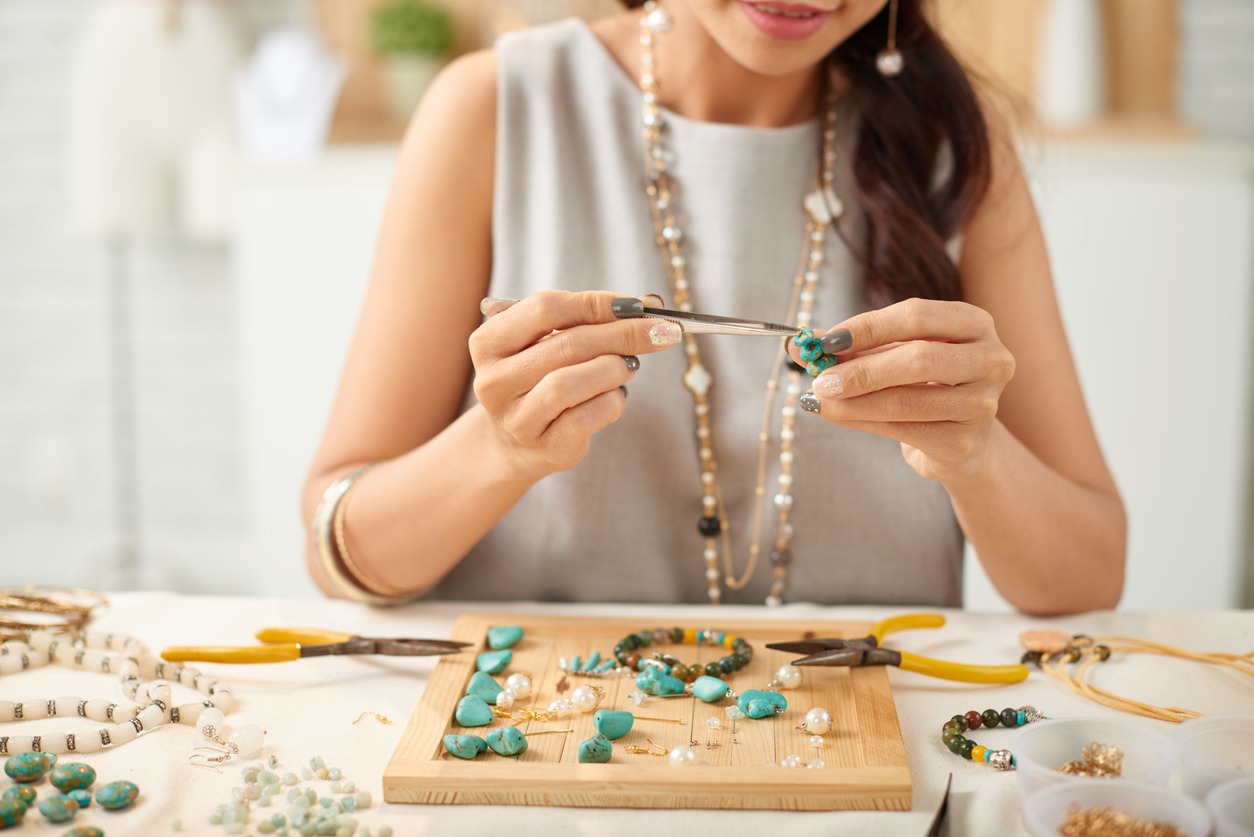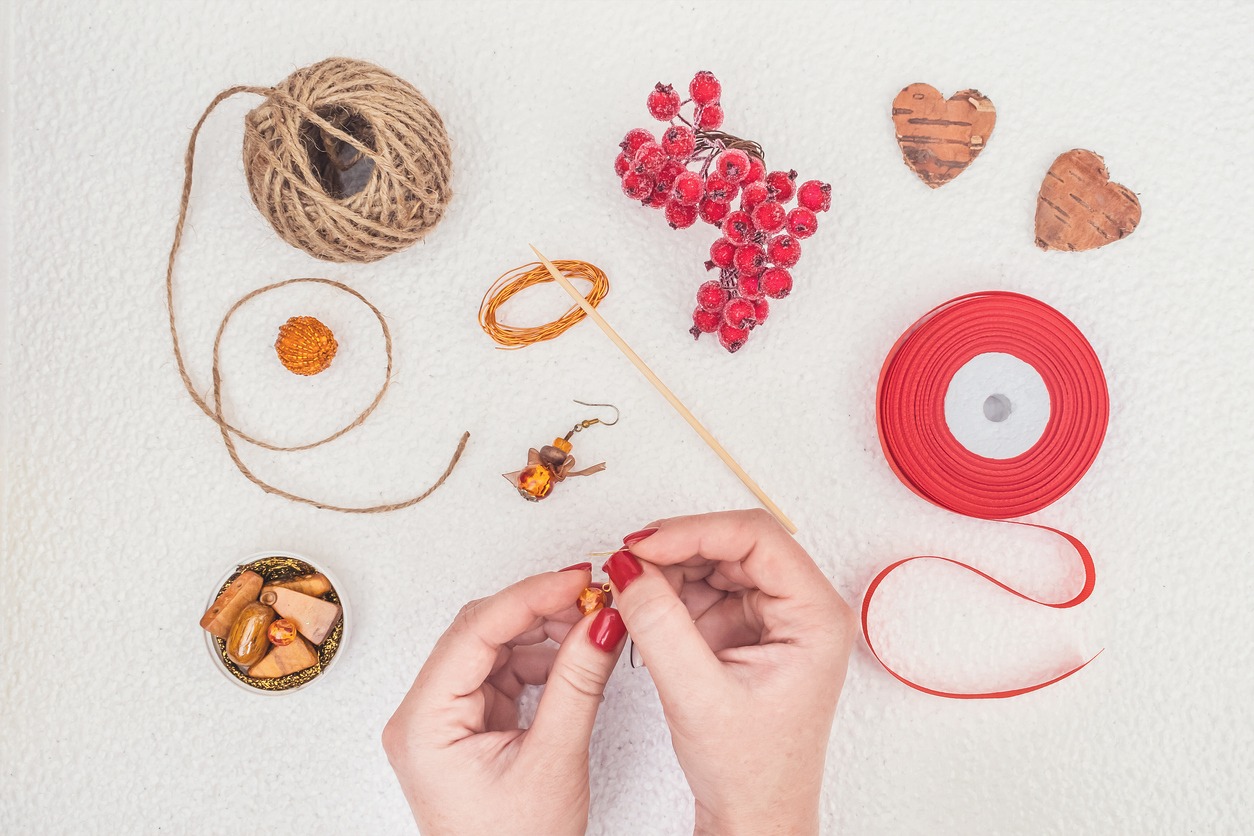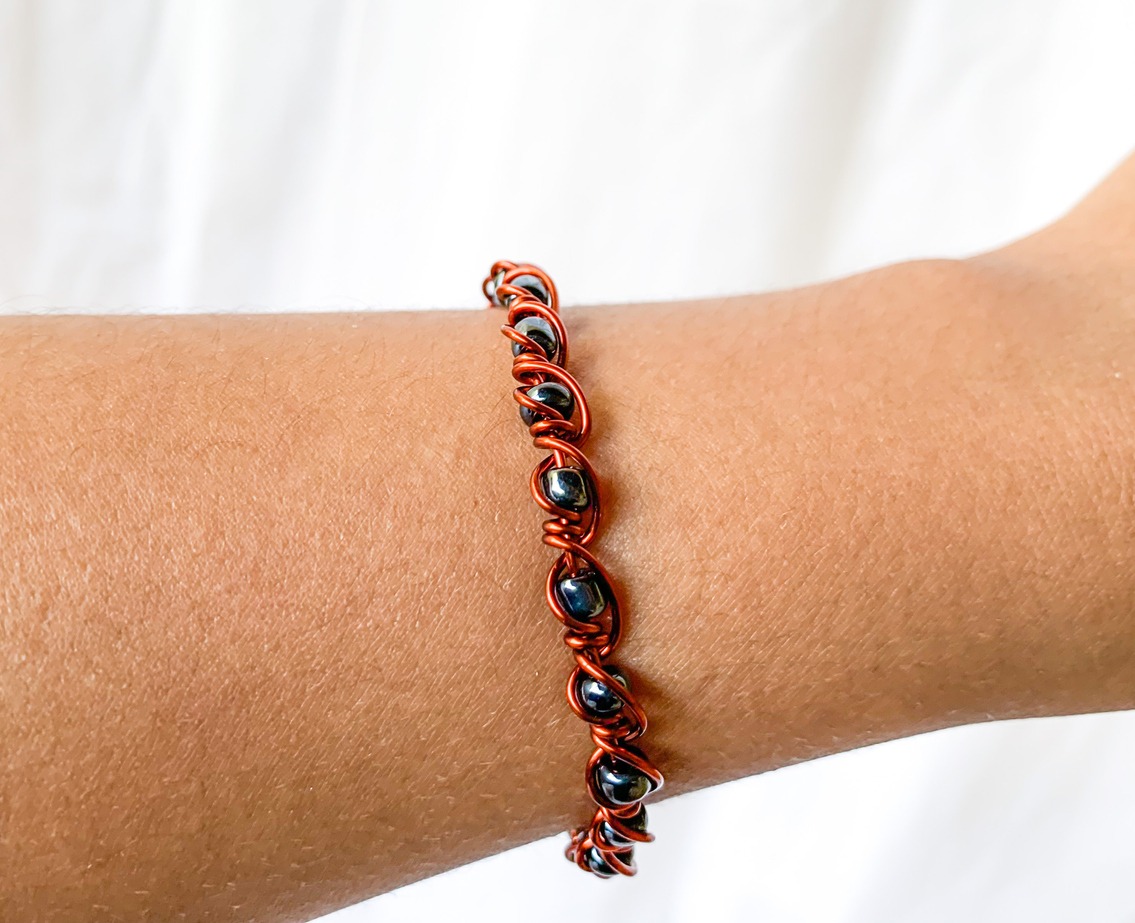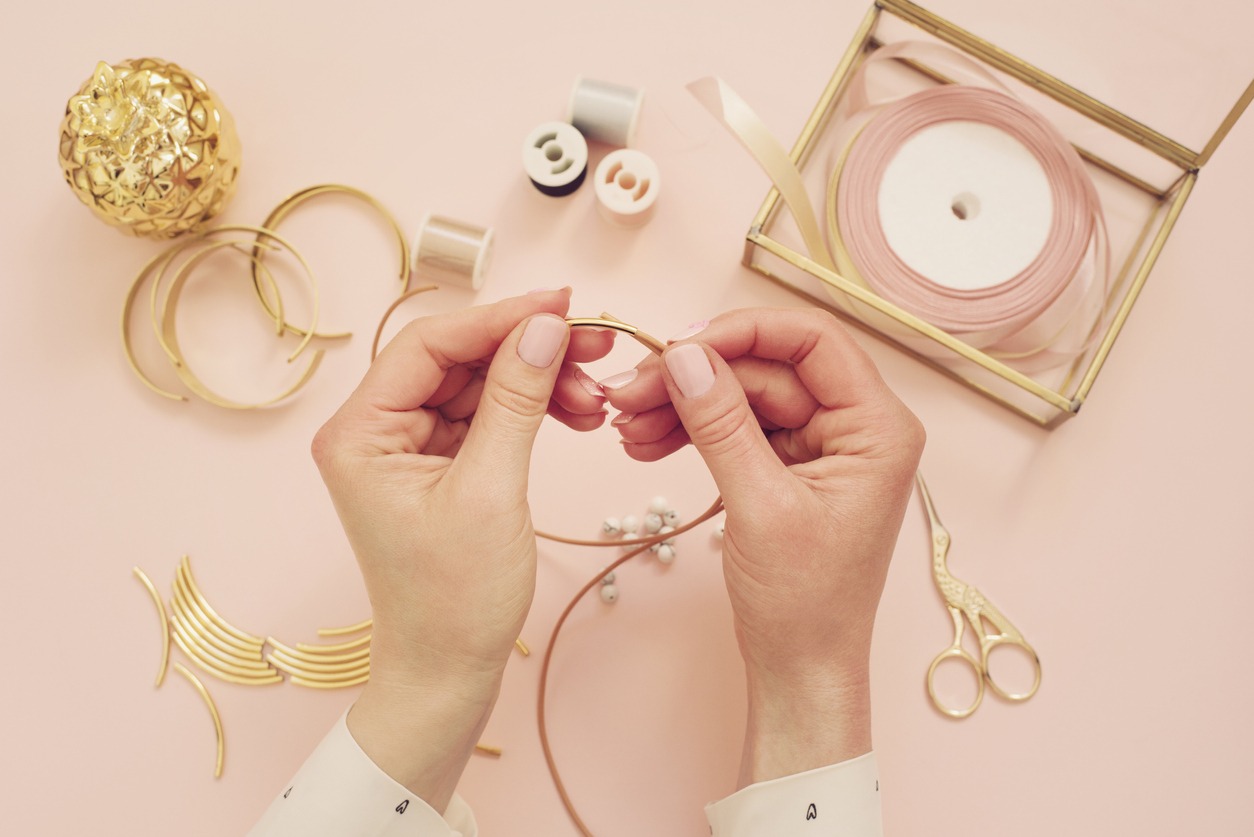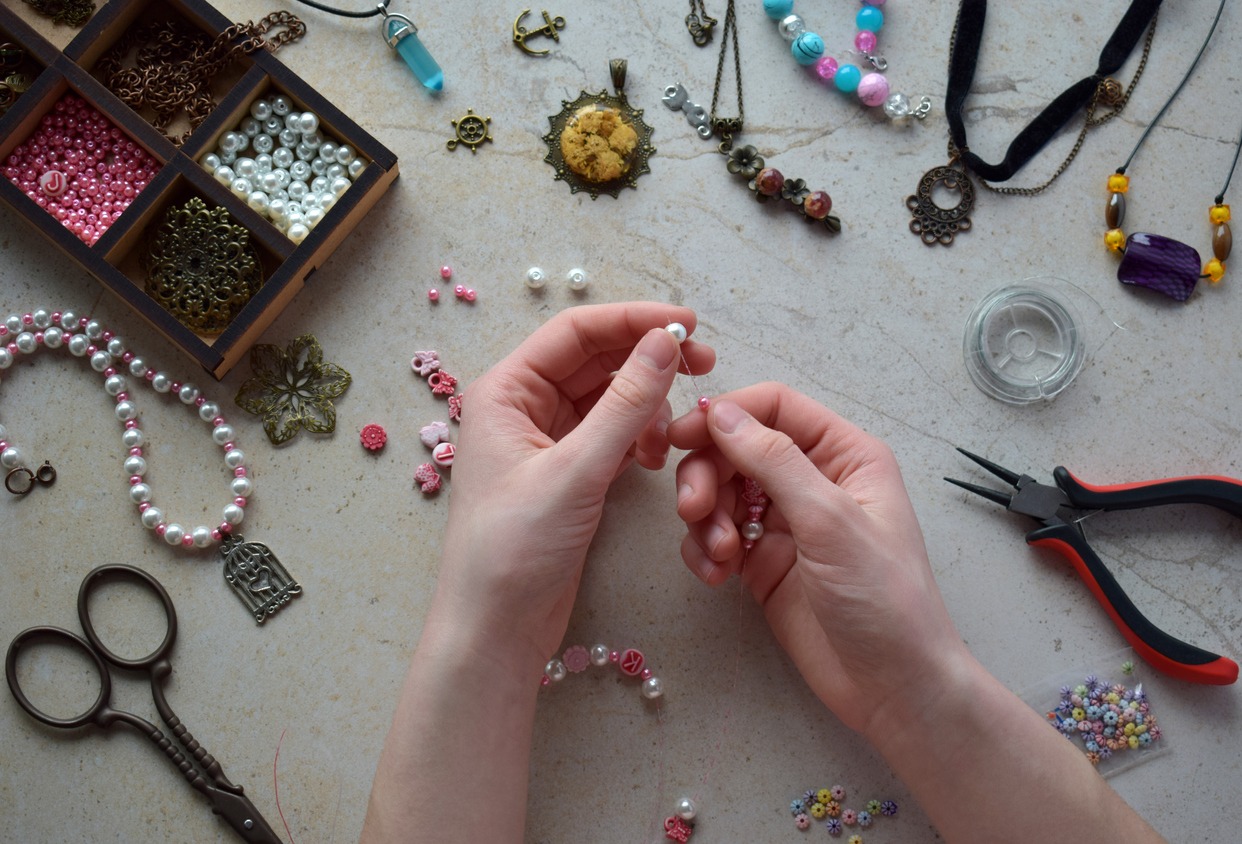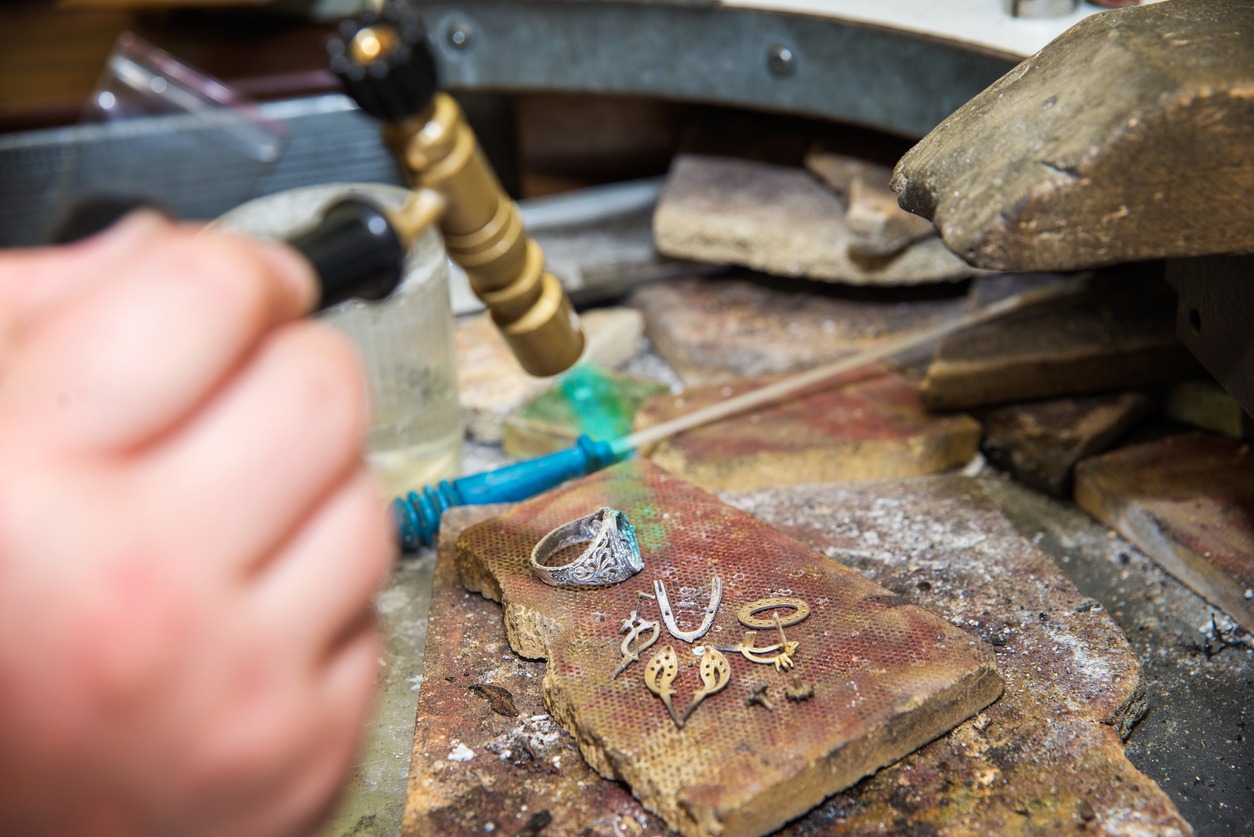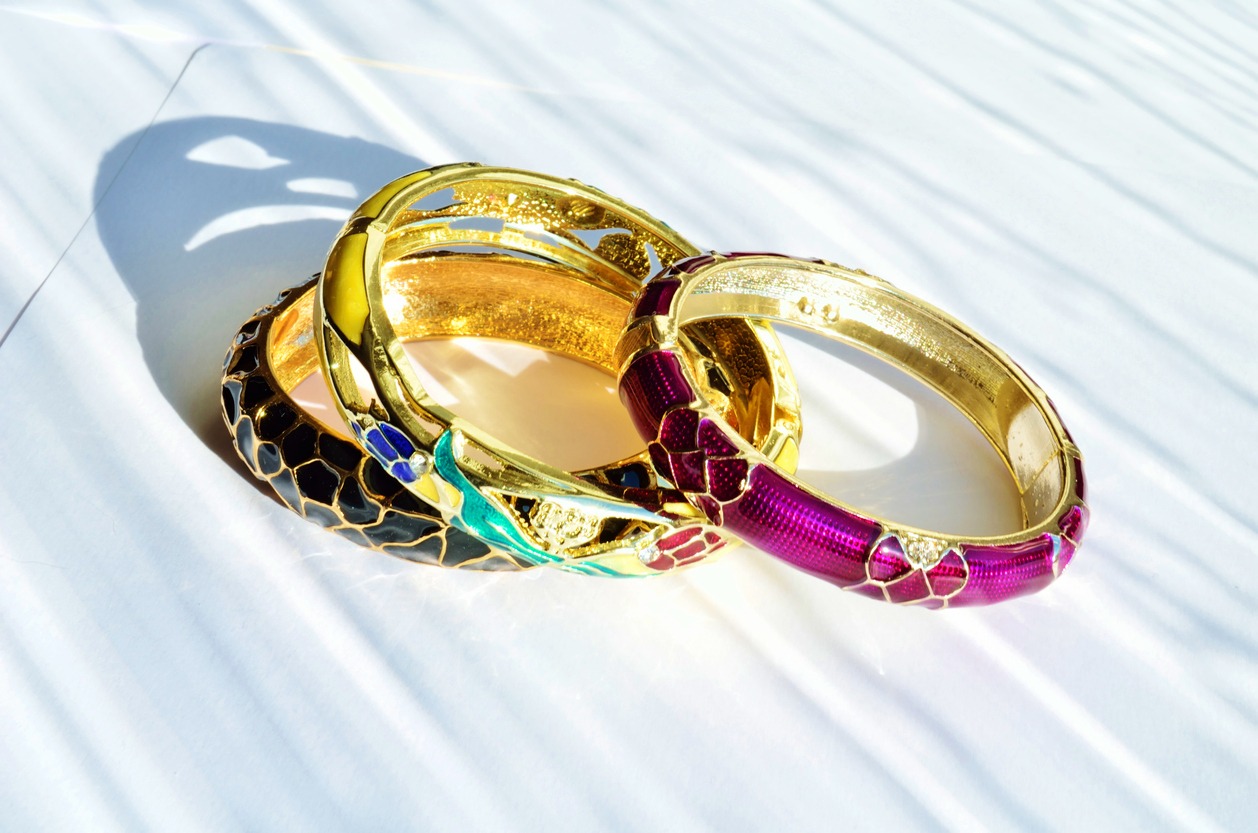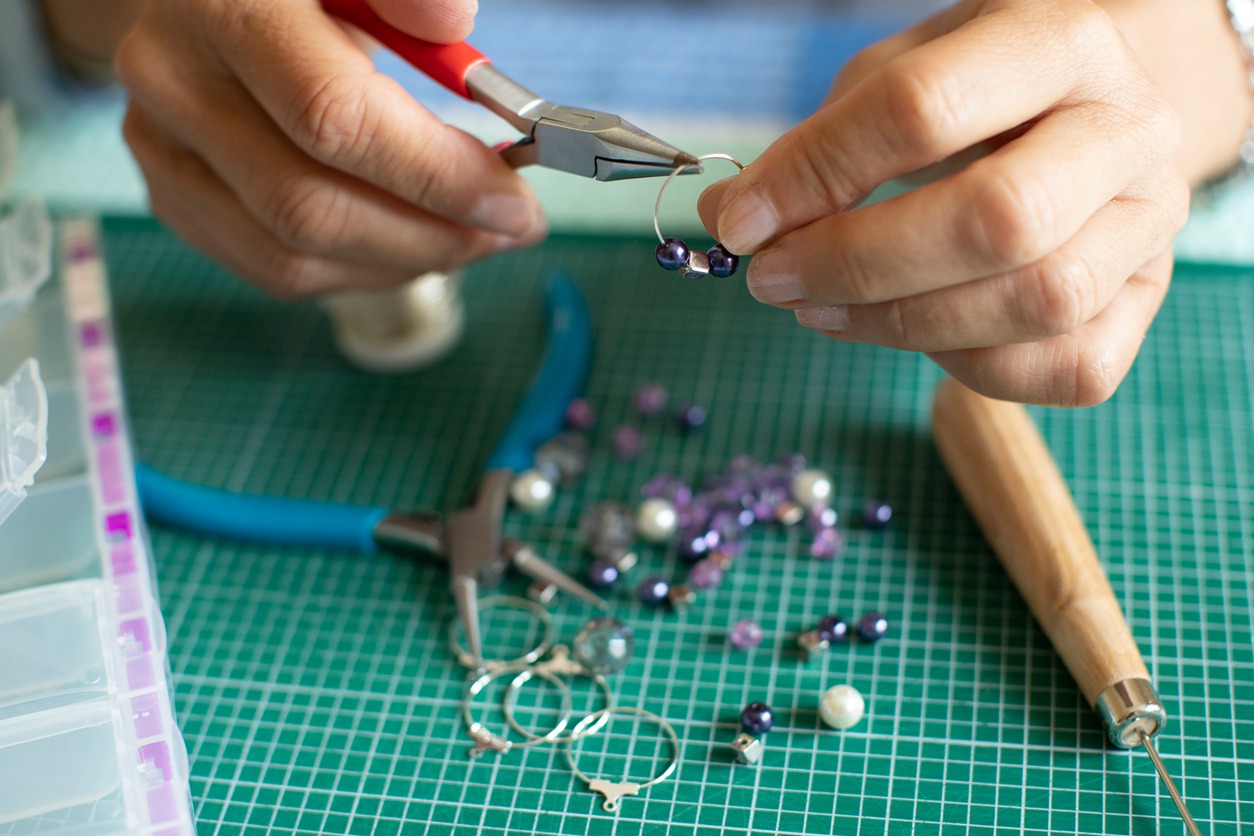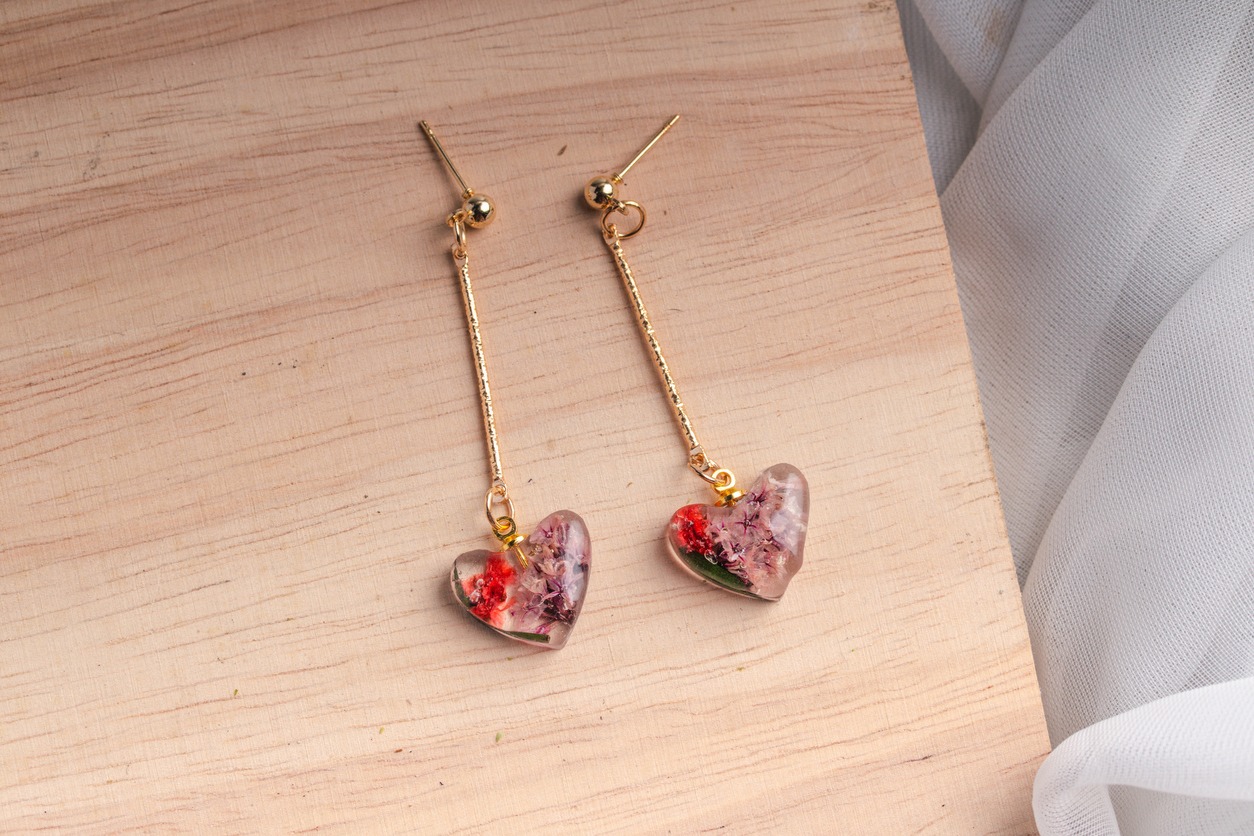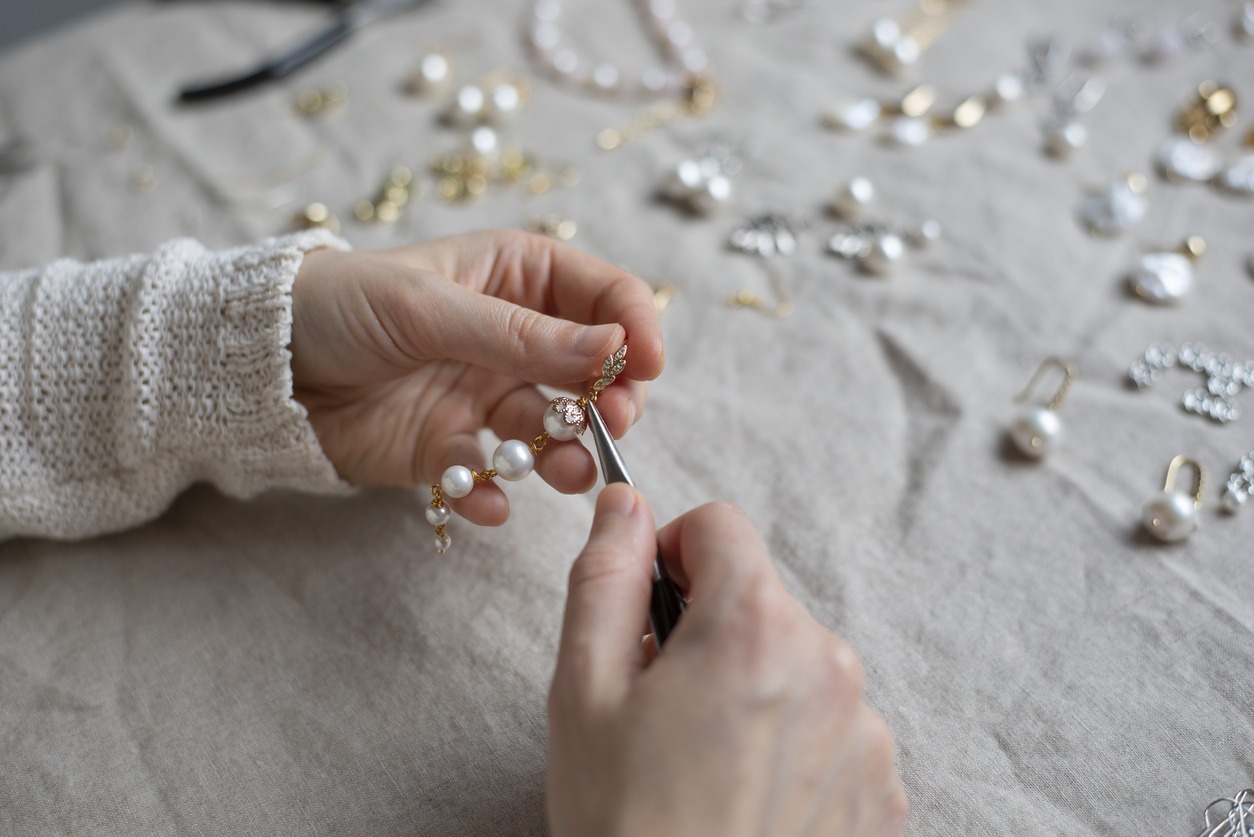In recent times, handmade jewelry crafting has gained significant popularity, becoming more accessible than ever. If you’re intrigued by the world of handmade jewelry crafting or want to embark on it as a hobby or business, it’s a great idea to start by understanding its various types.
Jewelry comes in many forms, each with its own design and style. You can discover a wide array of handmade jewelry, ranging from elegantly crafted beaded pieces to meticulously handmade leather jewelry. Since the materials are readily available, you can source them from local stores.
In this article, we’ll delve into the diverse types of handmade jewelry that you can offer:
What Exactly is Handmade Jewelry?
Handmade jewelry is a labor of love, created by skilled artisans without the help of automated machines. It’s not confined to a specific “look” – it can range from simple, handcrafted pendants and bracelets to complex designs that require hours of meticulous craftsmanship. What unites all handmade jewelry is that every piece is painstakingly fashioned by the hands of a dedicated artist using basic tools. To earn the label “handmade,” the entire process, from shaping raw materials to finishing touches, must be a result of manual craftsmanship.
Handmade jewelry crafting is a time-intensive endeavor. No two pieces are exactly alike; they bear charming imperfections, with subtle variations in each design.
Different regions, cultures, and tribes have their own distinct jewelry-making methods. Native groups often pass these techniques down the generations, and the interplay of cultural, societal, and historical influences continues to shape the techniques employed by jewelry artisans today.
Why Opt for Handmade Jewelry?
When you opt for handmade jewelry, you’re choosing a one-of-a-kind keepsake every time. Each piece bears a touch of individuality, with slight variations that add character, showcasing the artistry of the creator. Handmade jewelry isn’t about flawless perfection; it’s about the story behind the design and the artist you’re supporting. Supporting this unique jewelry industry benefits independent brands and shops, injecting fresh creativity into a saturated market where many pieces look alike.
By purchasing handmade jewelry, you’re also helping small business owners pursue their passions. These businesses can be as small as a stay-at-home mom selling items on Etsy or local entrepreneurs deeply involved in their communities. They often source their materials from fellow small businesses, contributing to the backbone of our economy.
Handmade jewelry artists are inclined to use ethically sourced materials, making them an excellent choice for those seeking ethical and sustainable jewelry. They often collaborate with companies known for recycling scrap metal and ensuring the conflict-free origins of gemstones and diamonds. Some even go the extra mile by personally visiting mining locations to guarantee the ethical sourcing of their materials.
Moreover, handcrafted jewelry can be tailored to your clients’ styles and preferences. It makes for thoughtful and personalized gifts, appreciated for their personal touch and unique charm.
If you’re thinking about starting up a handmade jewelry business, marketing your products is essential. Your photos must stand out, so it’s best to also learn jewelry photography.
What Are the Types of Handmade Jewelry?
Wire Wrapped
Wire jewelry-making is an age-old technique that dates back thousands of years. This method doesn’t involve applying heat to the metal; instead, it relies on bending and wrapping wire to craft both simple and intricate designs, fashioning necklaces, earrings, rings, bracelets, and headwear. Some wire-wrapped designs feature intricate weaves and scrolls, while others keep it simple with a basic wrap. Wire options range from plated wire with a copper core to sterling silver and even 9ct gold.
Often, charms like stones, gems, and beads are wrapped with wires to create these pieces. Hard wires are typically used for straightforward designs due to their rigidity, while soft wires are ideal for crafting complex designs. Crafting intricate wire-wrapped jewelry is a time-consuming and skill-intensive process. Mastery of wire wrapping is a craft that requires dedication and practice.
Wire-wrapped jewelry can be described as a decorative frame embellished with additional ornaments attached to coiled wire. Some wire-wrapping experts even craft intricate and delicate wire-wrapped jewelry designs.
Fabricated Jewelry
Handcrafted fabricated jewelry spans a diverse range of styles, from classic gemstone rings to imaginatively artistic pieces. Fabricated jewelry relies on metalsmithing techniques and adept jewelry craftsmanship. Jewelers employ a metal saw to shape the piece or craft intricate details and soldering to join components together. This can be as straightforward as connecting two pieces or as intricate as multiple solder joins.
Beyond precious metals like gold, silver, and platinum, materials like copper, bronze, aluminum, and steel find their place in fabricated jewelry.
The process of creating fabricated jewelry demands patience and precision since it involves cutting metals into desired shapes and then skillfully joining them to form exquisite jewelry pieces. Learning the art of fabrication demands time and dedication, often gained through studio classes at community art centers, vocational schools, or universities.
Once jewelers grasp the fundamental concepts, they unlock the ability to manipulate metal in various ways. Their initial collections may be modest, but with growing knowledge and practice, they can create intricate and technically challenging pieces. This is where the hardworking hands of jewelry artisans truly shine!
Beaded Jewelry
Beaded jewelry is a versatile category that involves the use of beads made from various materials like wood, plastic, glass, or other materials. Handmade beaded jewelry can range from the simplest to the most intricate designs, depending on the choice of beads. Makers can string beads on a single strand of stringing material to create beautiful bracelets and necklaces. These beads typically have a hole in the center and are strung onto a thread or thin wire.
The choices are virtually limitless, catering to different tastes. You can go for bold materials like shells to make a statement or opt for smaller, colorful resin beads to add a subtle pop of color.
The beads themselves offer endless creative options – you can find beads with letters or numbers for personalization, whimsical shapes to express your interests, or large statement beads complemented by smaller ones.
With practice and the use of tiny beads, artisans can craft larger and more complex designs. Beads are versatile and can be incorporated into various jewelry types as accent pieces. For instance, a beaded necklace can add a playful twist to a simple chain when showcasing your centerpiece creation.
Hand Stamped and Engraved Jewelry
Hand stamping involves creating designs by impressing a metal stamp onto a metal blank using a heavy hammer. The tools needed for this craft are easily obtainable, making it an ideal starting point for those interested in jewelry making. You can explore a wide range of ready-made stamp designs, including various shapes, alphabets, animals, patterns, special quotes, and more. It’s a versatile technique that works with different metals, from budget-friendly options like aluminum and copper to pricier metals like gold and sterling silver.
Engraving offers a higher level of intricacy in design but demands greater skill and, at times, specialized equipment. When a jeweler hand engraves a piece, they use a sharpened engraving tool to meticulously cut a hand-drawn design into the material. This technique requires practice and patience, as achieving precision takes time. It’s a method that allows for exquisite details and a personal touch in jewelry designs.
In the world of hand-stamped and engraved jewelry, there’s room for both beginner-friendly creativity and the mastery of intricate craftsmanship, catering to a wide range of preferences and styles.
Enameled Jewelry
Handmade enameled jewelry offers a vibrant way to infuse color into your metal jewelry pieces. The art of enameling involves fusing glass powder onto the surface of metals, creating a lasting and vivid bond. There are various methods to incorporate enamel into handmade jewelry, with torch-firing being the most favored technique today. This approach is considered simpler and more budget-friendly, as it allows you to utilize your soldering torch to heat the enamel on your metal.
Enameled jewelry gained popularity during the vibrant Jazz Era of the 1920s. It has recently experienced a resurgence thanks to its modern and fashionable appeal. The striking colors of enamel jewelry beautifully complement neutral-toned clothing. You can find handmade enamel jewelry in jewelry stores from manufacturers and suppliers, often at an affordable price.
While torch-firing is accessible, many enameling techniques require a kiln for a gentler heating process. Cloisonne, for instance, is a renowned enameling technique with a rich history. It involves using wire to create small compartments that form a design with enamel. Another challenging technique is plique-a-jour, which produces a stained glass-like effect as the enamel lacks a backing. These techniques offer exciting possibilities for creating captivating enameled jewelry pieces.
Handmade Metal Jewelry
Handcrafted metal jewelry is a popular choice, offering affordability and a range of options. Artisans often work with materials like silver alloys, copper, stainless steel, and more to create stunning pieces. In the world of handmade metal jewelry, designers frequently use pre-made components to craft their unique designs. Gold-plated copper jewelry, for example, can emulate the luster of gold, providing an elegant touch.
Precious metals like silver and gold hold a special place in handmade jewelry. Once silver is combined with another metal to form an alloy, it becomes malleable, allowing artisans to shape it into various jewelry items such as rings, necklaces, anklets, earrings, and more. Goldsmiths and silversmiths employ techniques like hammering, soldering, casting, cutting, and welding to transform these metals into exquisite pieces that can be worn casually or on formal occasions. In the realm of handmade metal jewelry, the possibilities are diverse, catering to different tastes and styles. Small, minimalist metal pieces of jewelry are great to wear even while playing sports like golf.
Metal Clay Jewelry
Metal clay is a unique and fascinating material used in jewelry making. It’s composed of tiny particles of metals like bronze, silver, or gold mixed with water and an organic binder. What makes it special is that it solidifies into metal when fired in a kiln.
Jewelry makers work with metal clay just like traditional clay, molding and shaping it with their hands and tools. The magic happens when it’s fired in the kiln, as the clay transforms into metal. During this heating process, the piece may shrink by up to a third of its original size.
After firing, the pure form of the precious metal particles initially mixed into the clay remains. For instance, if you use silver metal clay, you’ll end up with an item that is 99.9% pure silver.
Metal clay offers an intriguing way to create jewelry, allowing artisans to craft unique pieces with the allure of precious metals.
Resin Jewelry
Resin jewelry stands out as one of the easiest forms of handmade jewelry to create, making it perfect for beginners. You don’t need any prior experience to dive into resin jewelry making. Resin, a liquid substance, can be molded effortlessly by pouring it into molds, allowing you to fashion exquisite pendants, rings, bangles, bracelets, and earrings. Even simple pieces can captivate with their unique elements encased in resin.
Crafters have the creative freedom to use a variety of elements like natural dried flowers, artificial flowers, pearls, beads, and glitters to craft resin jewelry. With different types of resin options, such as polyester, polyurethanes, epoxy, and silicon, along with readily available tools and molds, starting a resin jewelry project is a breeze.
Whether you’re a novice or a seasoned crafter, resin jewelry offers endless creative possibilities, transforming into eye-catching pieces when adorned with small, incorporated elements like flowers, pearls, or glitter particles. You can easily embark on your resin jewelry journey right in the comfort of your own home with just a few simple tools.
Pearl Jewelry
Pearls have been cherished for centuries as symbols of beauty, elegance, and sophistication. These unique gemstones require no cutting or polishing to captivate with their natural allure. Pearl jewelry appeals to people of all ages and remains a timeless choice.
You’ll find pearl jewelry in various forms, including bracelets, necklaces, chains, rings, and earrings. The versatility of pearl jewelry means you can choose from simple to intricate designs to suit your style.
Modern pearl jewelry offers more than just classic white and cream-colored pearls. Dyed pearls in an array of captivating colors are used to create exquisite pieces. These dyed pearl bead jewelry items exhibit a sophisticated and stylish design, adding a touch of contemporary flair to this timeless gem.
Leather Jewelry
When we think of jewelry, precious metals, gemstones, pearls, and beads often come to mind. However, leather has been making its mark as a trendy jewelry material, catching the attention of both men and women.
Leather jewelry embraces dark, rich colors like black, brown, and dark brown, exuding style and elegance. Many individuals opt for leather jewelry to infuse a unique flair into their look.
Designers often incorporate various metal components to complement leather jewelry, with stainless steel, copper, and silver being popular choices. Unisex handmade leather accessories and jewelry have gained popularity, allowing people to make a bold fashion statement.
Natural Stone and Crystal Jewelry
Handmade jewelry enthusiasts have a deep appreciation for the natural beauty of stones and crystals in jewelry. The selection of natural stones and crystals is vast, allowing jewelry lovers to choose colors that complement their skin tone, eye color, and attire.
Earrings, necklaces, and bracelets adorned with natural stones and crystals are currently in vogue. To support these exquisite gems, designers frequently use gold-plated metals, copper, stainless steel, and silver, resulting in stunning handmade jewelry pieces that harmonize with the allure of nature.
Hand-Assembled Jewelry
For beginners in the world of crafting, hand-assembled jewelry provides an easy and accessible starting point. This handmade jewelry-making technique allows crafters to experiment with pre-made chains, charms, lockets, and various other jewelry findings.
You have the creative freedom to work with a variety of materials, including metals, beads, stones, tassels, artificial feathers, or even flowers. With a good eye for color combinations and design, you can assemble your own unique necklaces, bracelets, and earrings.
Sourcing materials for hand-assembled jewelry is straightforward, as crafters can purchase them in bulk at an affordable price. It’s an excellent way to embark on your handmade jewelry-making journey, offering the chance to create personalized and distinctive pieces without the complexity of more advanced techniques. In just a few days, you can learn the basics of this approach and start crafting beautiful jewelry.
Tools and Materials for Handmade Jewelry Crafting
Tools
- Wire Cutters: Come inside and end-cutting versions.
- Knotters: Used to create consistent knots in stringing.
- Chain Nose Pliers: Utilized for closing bead tips, crimping clasps, and attaching findings.
- Round Nose Pliers: Designed for rounding wire ends and shaping craft wire.
- Flat Nose Pliers: Wire pliers for crafting circles, angles, and distinctive wire forms.
- Split Ring Pliers: Used specifically for opening split rings.
- Wire Looping Pliers: Featuring three tiers on the top jaw for forming three loop sizes, while the lower jaw is concave and fits over the looping jaw for easy bending.
Wire/Stringing Materials
- Silk Thread: 100% silk thread is ideal for stringing pearls, beads, and various metals and is available in a variety of colors to suit your preferences.
- Steel Wire: Used for stringing seed beads, ceramic, glass, metal, and stone beads.
- Copper Wire: Naturally colored wire is often used for wrapping in jewelry making.
- Silver Wire: Typically employed in wire wrapping and crafting rings.
- Hemp Cord: A sturdy and durable cord suitable for making belts, necklaces, bracelets, and more.
- Leather Cording: Known for its consistent color and flexible texture with a smooth finish.
- Rattail Cord: Made of 100% rayon and used for jewelry trimming, embellishments, and more.
- Chain: Composed of symmetrical metal links joined together, commonly used in crafting necklaces.
Beads
- Seed Beads: Tiny glass beads are frequently used in jewelry and embroidery projects.
- Pony Beads: Larger-hole plastic beads commonly employed in hair braiding and headpiece jewelry.
- Glass Beads: Including Czech glass, lampwork beads, and dichroic effects, perfect for stunning beadwork.
- Plastic Beads: Available in various shapes and sizes, encompassing affordable Perler and pony beads, as well as stylish pendants for jewelry crafting.
- Wood Beads: Often made from natural wood and intricately carved with artistic designs.
- Pendants: These can resemble beads or artistic pieces with jump rings for stringing as dangles.
Findings
- Eyepins: Metal pins of varying lengths with an eye closure at one end are used to secure beads.
- Headpins: Metal pins of different lengths with a flat closure at one end are also used to hold beads.
- Clasps: Metal closures in various finishes for necklaces and bracelets, including toggle, barrel, standard, magnetic, and more.
- Jump Rings: Available in multiple sizes and finishes, used as connectors in chain maille jewelry.
- Earring Findings: Include fishhooks, hoops, lever backs, and more, coming in various finishes.
- Miscellaneous Findings: Such as headbands, bar pins, stick pins, base rings, and more, offering versatile options for jewelry projects.
Getting Started with Handmade Jewelry Crafting
Are you eager to venture into the world of crafting your own jewelry? Whether you’re aiming to kickstart a side business, transition into a new career, or simply explore it as a hobby, there are numerous avenues to begin your journey.
You can start by reading this guide to making your own jewelry and searching for informative tutorials on platforms like YouTube, where you’ll find valuable tips on what essentials you’ll need to start and how to master some of the fundamental techniques. Starting your jewelry-making adventure from the comfort of your home is an excellent first step.
However, to truly excel and refine your skills, consider taking the next step by participating in a class or workshop. This hands-on, in-person training allows you to ask questions, seek guidance, and receive feedback directly from experienced and skilled jewelry instructors. It’s the most effective way to advance your jewelry-making expertise.
